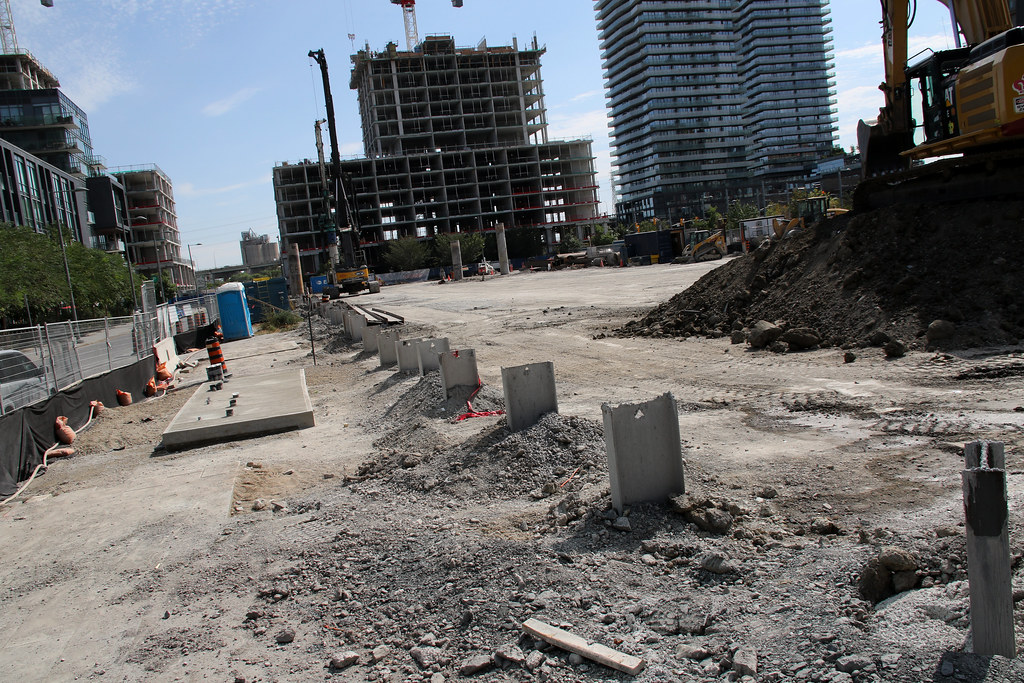The Indigenous Hub, 425 Cherry Street - Anishnawbe Health Toronto - Public Art Plan
Design
The new Indigenous Hub, designed in the location of the former river delta and estuary, is intended to reference the importance of this specific place through its layers of design elements across the entire block. Comprised of five unique buildings, each one tells its own piece of the story starting with the ground plane and the AHT building. Designed to appear as if being eroded from the movement of water, the building’s ground floor is carved into the block with only remnants of pebble shaped spaces remaining. This concept also informs the urban realm, which encircles the entire block. The other buildings in the block also speak to acknowledging the ground plane, the concepts of craft, and the sky.
Public Art
In line with City of Toronto and Waterfront Toronto efforts to advance Indigenous placemaking in the public realm, AHT has identified the inclusion of public art by an Indigenous artist as a prominent feature that will represent, promote and affirm cultural well-being and pride. Building on the functionality of a community engaged service hub, AHT has identified the Southwest Plaza as an ideal location for the permanent public art’s physical embodiment to represent and share the outdoor inclusive space. This space will facilitate hospitality, and community and public engagement, enlivened by Indigenous visual art and culture.
A significant permanent site-specific public art commission designed, developed, and created by an Indigenous artist or artist team will be installed in the AHT plaza, a primary gateway and a gathering place at the southwest corner of the Hub. The public artwork will contribute towards broadening the city-wide recognition of Indigenous cultural vitalization, creative expression, and city placemaking as it relates to the Lower Don Valley’s multi-layered and complex history of the land. In proximity to the soon to be named Wonscotonach Parklands, the Don River’s historical role as a corridor networking land-based cultures, mirrors the essential services of optimal holistic wellness offered at AHT.
Public Art Location Opportunities
The Southwest Plaza is envisioned as a cultural gateway to the Indigenous hub from the Distillery District, which leads to a multi-functional shared outdoor space that will facilitate and program cultural activities and commerce opportunities. This location will allow free public access in the Southwest Plaza’s highly visible location for the public artwork to be accessible across the high foot-traffic area of the Indigenous Hub, ensuring widespread visibility and engagement.
The commissioned work could, for instance, be integrated or anchored into the ground surface of the plaza, or installed on an adjacent building wall, or a combination of these (multiple sites). However, artwork must have a direct relationship to the location’s functioning circular plaza. The work could take the form of a more traditional sculpture, an art installation, or combine a variety of forms. Artwork should interface / complement and not compete with the overall architectural design elements of AHT.
Several locations have been identified as possibilities for the public art. These are indicated below. Artist proposals must specifically address these location options on the plaza.











